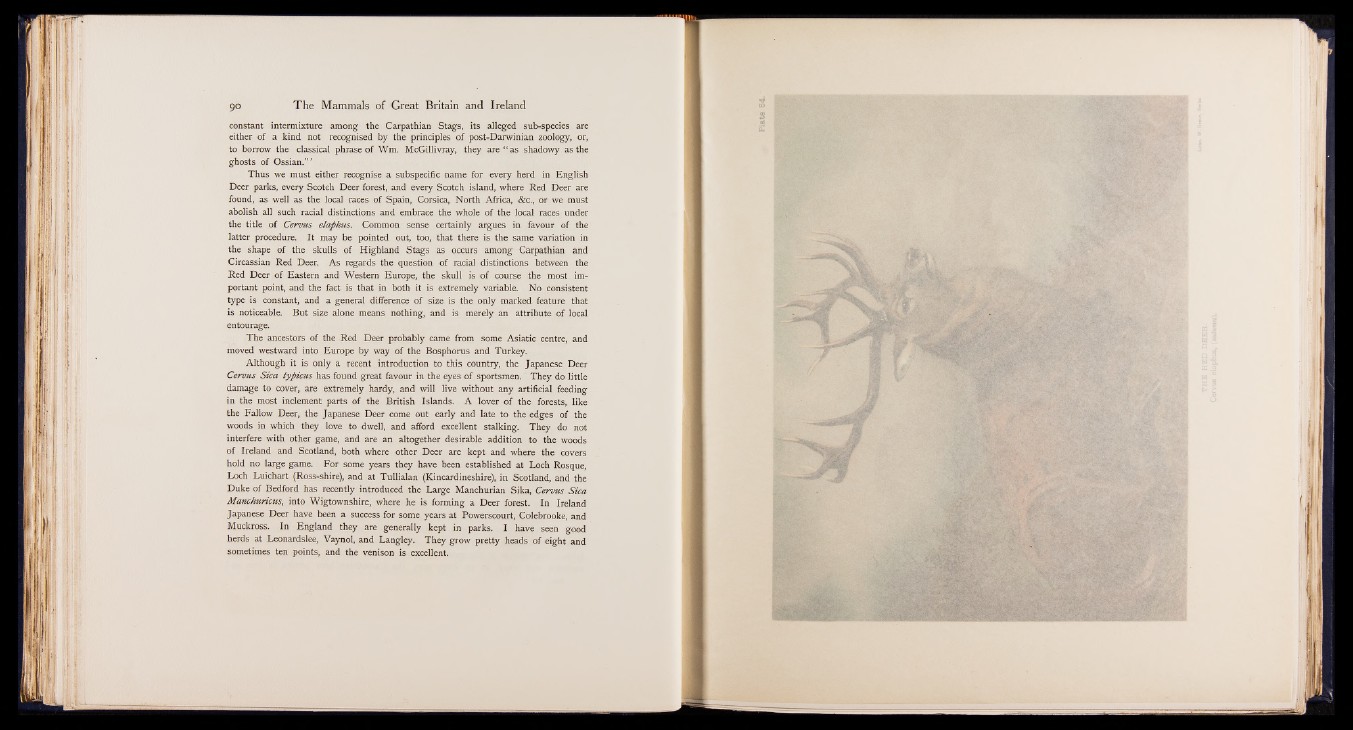
constant intermixture among the Carpathian Stags, its alleged sub-species are
either of a kind not recognised by the principles of post-Darwinian zoology, or,
to borrow the classical phrase of Wm. McGillivray, they are “ as shadowy as the
ghosts of Ossian.” ’
Thus we must either recognise a subspecific name for every herd in English
Deer parks, every Scotch Deer forest, and every Scotch island, where Red Deer are
found, as well as the local races of Spain, Corsica, North Africa, &c., or we must
abolish all such racial distinctions and embrace the whole of the local races under
the title of Cervus elaphus. Common sense certainly argues in favour of the
latter procedure. It may be pointed out, too, that there is the same variation in
the shape of the skulls of Highland Stags as occurs among Carpathian and
Circassian Red Deer. As regards the question of racial distinctions between the
Red Deer of Eastern and Western Europe, the skull is of course the most important
point, and the fact is that in both it is extremely variable. No consistent
type is constant, and a general difference of size is the only marked feature that
is noticeable. But size alone means nothing, and is merely an attribute of local
entourage.
The ancestors of the Red Deer probably came from some Asiatic centre, and
moved westward into Europe by way of the Bosphorus and Turkey.
Although it is only a recent introduction to this country, the Japanese Deer
Cervus Sica typicus has found great favour in the eyes of sportsmen. They do little
damage to cover, are extremely hardy, and will live without any artificial feeding
in the most inclement parts of the British Islands. A lover of the forests, like
the Fallow Deer, the Japanese Deer come out early and late to the edges of the
woods in which they love to dwell, and afford excellent stalking. They do not
interfere with other game, and are an altogether desirable addition to the woods
of Ireland and Scotland, both where other Deer are kept and where the covers
hold no large game. For some years they have been established at Loch Rosque,
Loch Luichart (Ross-shire), and at Tullialan (Kincardineshire), in Scotland, and the
Duke of Bedford has recently introduced the Large Manchurian Sika, Cervus Sica
Manchuricus, into Wigtownshire, where he is forming a Deer forest. In Ireland
Japanese Deer have been a success for some years at Powerscourt, Colebrooke, and
Muckross. In England they are generally kept in parks. I have seen good
herds at Leonardslee, Vaynol, and Langley. They grow pretty heads of eight and
sometimes ten points, and the venison is excellent.